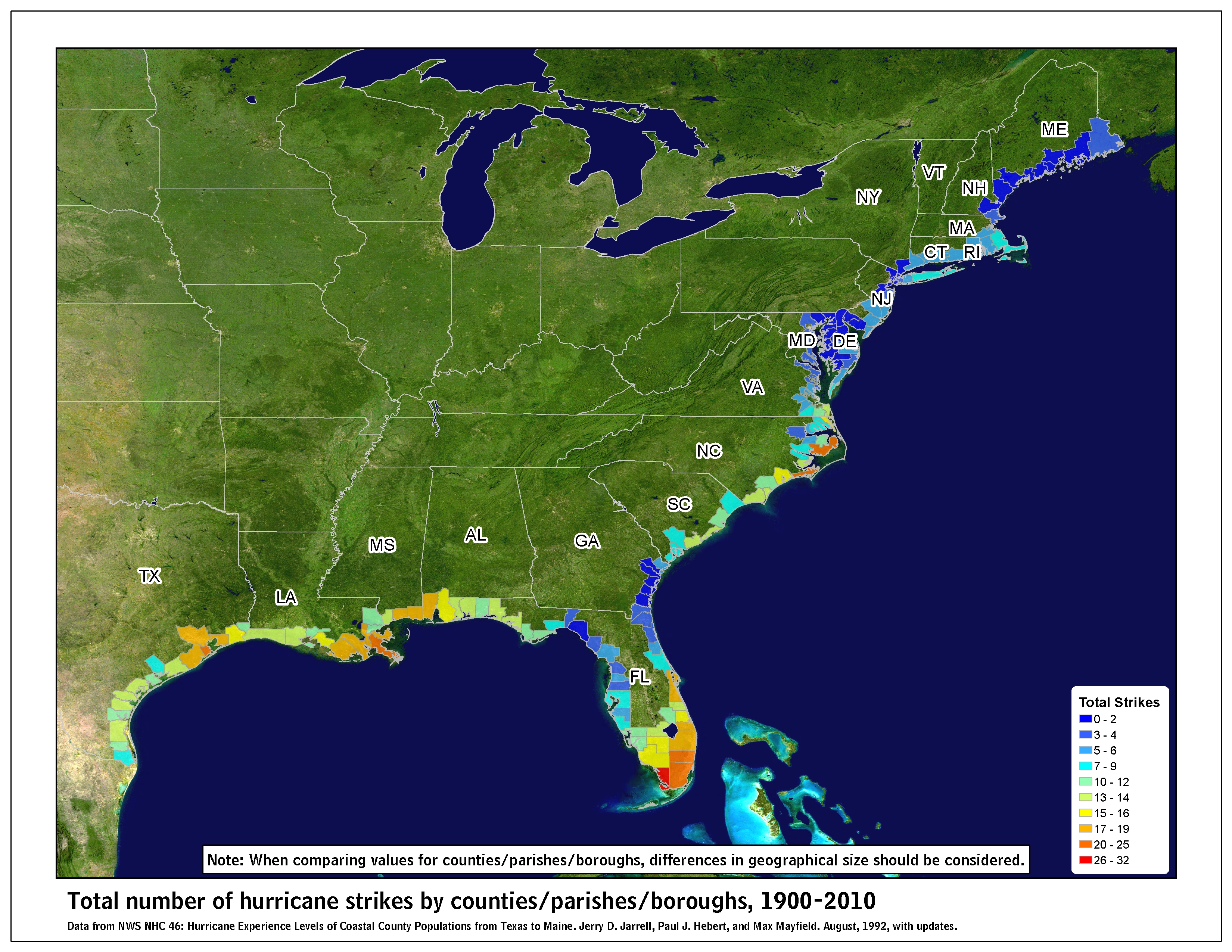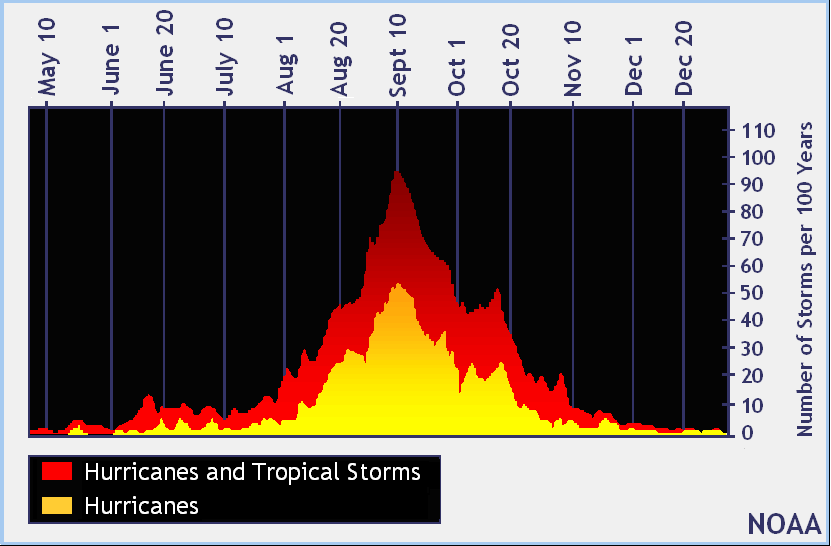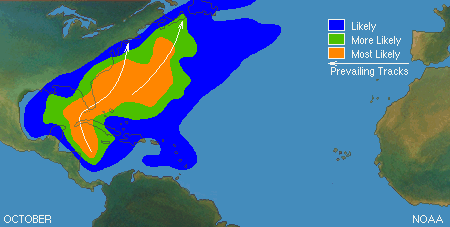Hurricane Climatology

Hurricanes are one of the most severe types of weather to impact the coastline of the eastern continental United States (U.S). A common misconception is that there are parts of the coast, from Texas to Maine, that do not get hurricanes. In fact, since 1850, all of U.S. coastal counties have been impacted by either at least one direct or indirect landfalling storm. The most susceptible locations to hurricane strikes are the southeast and southwest coasts of the Florida Peninsula, the Gulf Coast, and the Carolina Coast.

Hurricane season runs from June 1st through November 30th, though there have been storm systems that have organized outside of that period. One of the earliest hurricanes to form on record was back in 1938 when a tropical storm developed and reached hurricane status on January 3rd. In December of 1954, Hurricane Alice formed and maintained its intensity before finally dissipating on January 6, 1955.
August 1st marked the beginning of the climatological ‘heart’ of hurricane season, when activity increases and peaks around September 10th.
An inactive beginning of the hurricane season does not mean that it will not have any significant storms.

Depending on the time of year, tropical cyclones can originate at different locations, such as the Gulf of Mexico, the Atlantic Ocean or the Caribbean Sea. One the storm forms, it can travel in different paths based on the setup of the atmosphere. Climatologically, the Gulf of Mexico is a typical point of origin for tropical cyclones during October. Having a sense of the general area where the storms develop and how they tend to move can give forecasters a better understanding of how they will track.